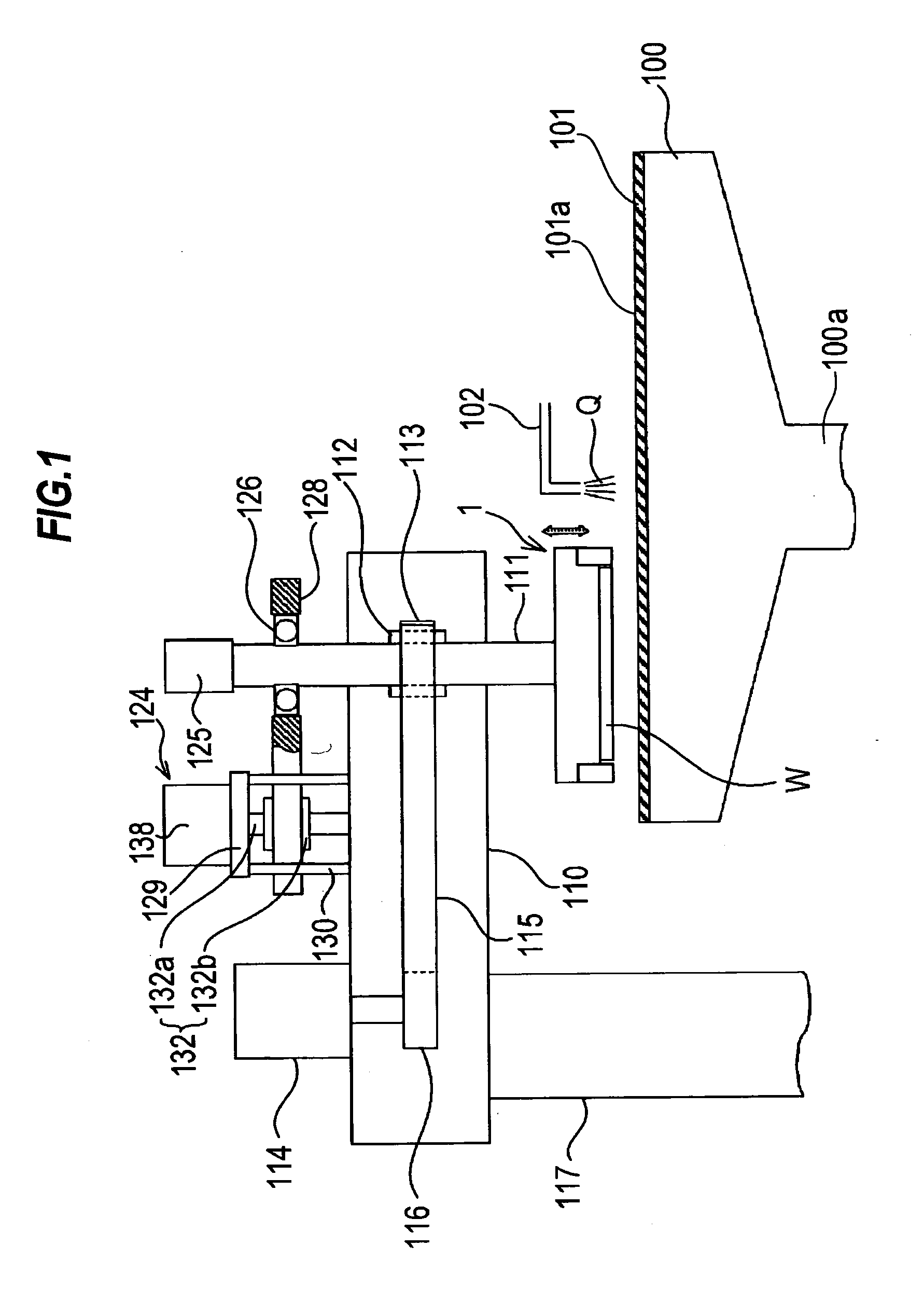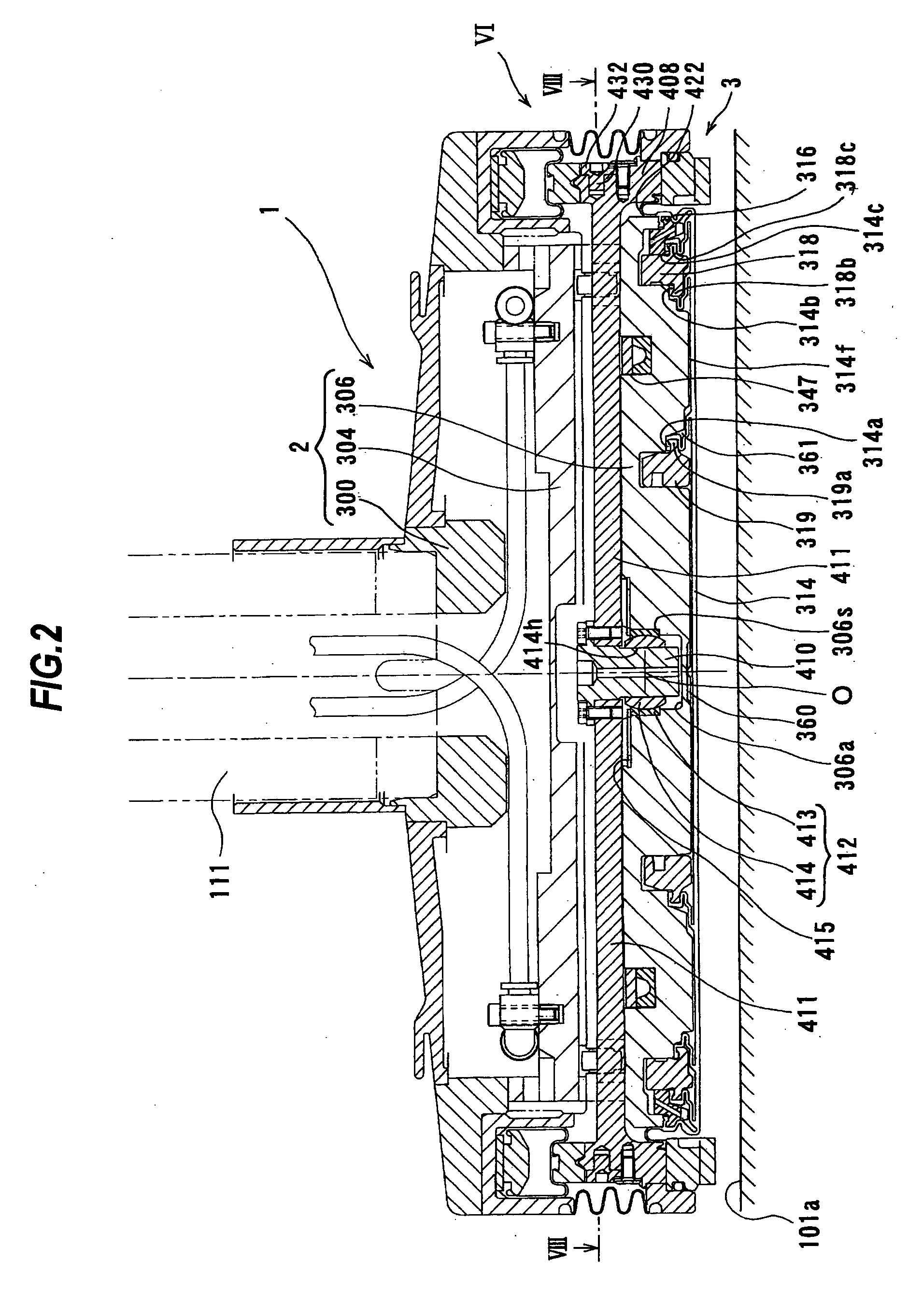Polishing apparatus
a technology of polishing apparatus and rotary disc, which is applied in the direction of grinding drives, grinding machine components, manufacturing tools, etc., can solve the problems of insufficient or excessive polishing of the surface of semiconductor wafer in different regions, poor film coating performance (step coverage) over stepped configurations of thin films, and increased manufacturing costs. , to achieve the effect of suppressing thermal expansion reducing the cost of fabrication process, and improving the following capability of the retainer ring
- Summary
- Abstract
- Description
- Claims
- Application Information
AI Technical Summary
Benefits of technology
Problems solved by technology
Method used
Image
Examples
Embodiment Construction
[0063]A polishing apparatus according to embodiments of the present invention will be described below with reference to FIGS. 1 through 19. Like or corresponding parts are denoted by like or corresponding reference numerals throughout drawings and will not be described below repetitively.
[0064]FIG. 1 is a schematic view showing an entire structure of the polishing apparatus according to an embodiment of the present invention. As shown in FIG. 1, the polishing apparatus comprises a polishing table 100, and a top ring 1 constituting a polishing head for holding a substrate such as a semiconductor wafer as an object to be polished and pressing the substrate against a polishing surface on the polishing table 100.
[0065]The polishing table 100 is coupled via a table shaft 100a to a motor (not shown) disposed below the polishing table 100. Thus, the polishing table 100 is rotatable about the table shaft 100a. A polishing pad 101 is attached to an upper surface of the polishing table 100. A...
PUM
 Login to View More
Login to View More Abstract
Description
Claims
Application Information
 Login to View More
Login to View More - R&D
- Intellectual Property
- Life Sciences
- Materials
- Tech Scout
- Unparalleled Data Quality
- Higher Quality Content
- 60% Fewer Hallucinations
Browse by: Latest US Patents, China's latest patents, Technical Efficacy Thesaurus, Application Domain, Technology Topic, Popular Technical Reports.
© 2025 PatSnap. All rights reserved.Legal|Privacy policy|Modern Slavery Act Transparency Statement|Sitemap|About US| Contact US: help@patsnap.com



